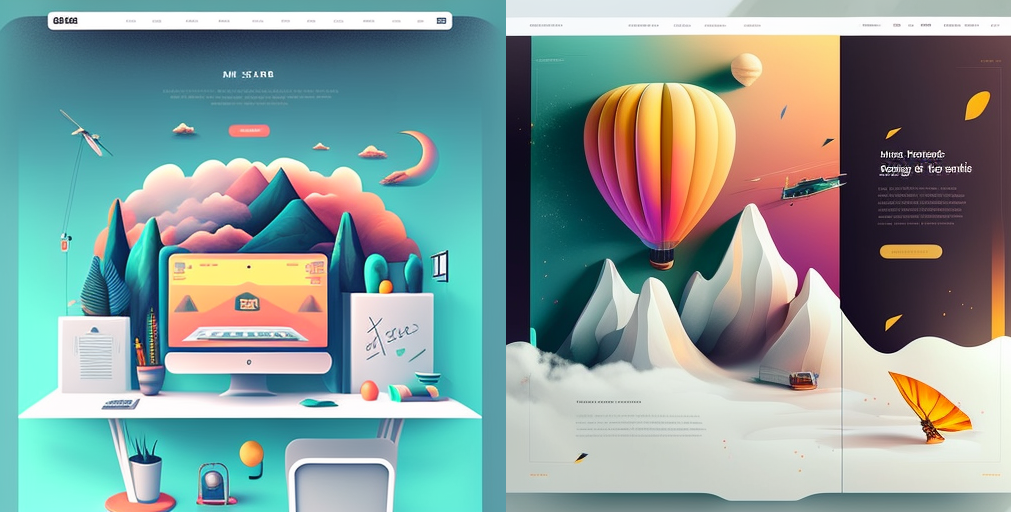In today’s highly competitive digital landscape, creating a visually appealing and highly functional website is no longer enough. The key to truly captivating your audience, boosting your online performance, and driving growth lies in offering an exceptional User Experience (UX). As a savvy New York web development and digital marketing agency, Obcido understands the importance of delivering seamless UX, which is why we are dedicated to guiding businesses like yours in creating websites that delight users, build trust, and encourage conversions.
In this comprehensive guide, we will explore essential principles, strategies, and best practices for crafting intuitive and engaging website designs tailored to your target audience. From understanding the user-centered design approach and conducting thorough research to implementing responsive design and optimizing site performance, we’ll showcase actionable insights that will help you elevate your web design and create a seamless User Experience.
Whether you’re a business owner looking to revamp your online presence or a web designer aiming to refine your UX skills, our expert guide provides invaluable knowledge to help you master the art of User Experience design. Join us as we delve into the world of UX and unveil transformative principles, innovative strategies, and industry-leading techniques to help you create captivating, intuitive, and engaging websites that will leave a lasting impression on your online audience.
Understanding the User-Centered Design Approach: Building Empathy for Your Audience
The foundation of effective UX design lies in understanding and empathizing with your target audience. Adopting a user-centered design approach ensures your website aligns with their needs, preferences, and expectations. Here’s how to embrace user-centered design:
- Define your target audience: Identify the demographics, interests, and pain points of your ideal customers. Creating detailed user personas can help you visualize and empathize with your audience, guiding your design decisions.
- Conduct user research: Gather insights on the needs, preferences, and expectations of your audience through various research techniques such as surveys, interviews, and usability testing.
- Analyze your competition: Conduct a competitor analysis to identify successful UX elements and potential areas of improvement, allowing you to create a differentiated and superior user experience.
- Continuously iterate and refine: Regularly test and analyze your website’s UX performance to identify areas for improvement and ensure you keep up with evolving user preferences and industry trends.
Responsive Design: Enhancing the User Experience Across Devices
An exceptional user experience must span across various devices and screen sizes. Responsive design ensures your website adapts seamlessly to different devices, providing users with an optimal experience regardless of their device preference. Consider these responsive design best practices:
- Utilize a fluid grid layout: Rather than designing your website based on fixed pixel dimensions, use a fluid grid layout that adapts to different screen sizes by allowing content to flow and resize proportionally.
- Create flexible images and media: Implement techniques that enable your images and media to resize according to screen size, ensuring they do not overlap or negatively impact the layout of your website.
- Implement touchscreen-friendly elements: Ensure the touch targets on your website, such as buttons and links, are large enough and spaced apart to facilitate easy navigation on touchscreen devices.
- Test your website on various devices and browsers: Regularly test your website’s performance and usability on multiple device types and browsers to ensure a consistent and optimal user experience.

Site Performance Optimization: Faster Load Times for Seamless UX
Site speed plays a critical role in delivering a seamless user experience, with slow-loading websites leading to user frustration and abandonment. To improve your site’s performance and ensure a satisfying UX, implement these optimization strategies:
- Optimize your images and media: Compress and resize images and media to reduce file sizes, ensuring they load quickly without compromising quality.
- Enable browser caching: Implement browser caching to reduce server load and decrease page load times by temporarily storing static files that users can access when revisiting your website.
- Minify CSS, JavaScript, and HTML: Remove unnecessary code, whitespace, and comments from your website’s CSS, JavaScript, and HTML files to reduce file sizes and enhance site performance.
- Leverage a Content Delivery Network (CDN): Utilize a CDN to distribute your website’s content across multiple servers, minimizing the physical distance between users and your website’s server, resulting in faster load times.
Website Navigation: Crafting an Intuitive and Seamless Experience
Intuitive and easy-to-use navigation is crucial for guiding users through your website. Designing your website’s navigation with clarity and simplicity in mind helps users find the information they need quickly and effortlessly. Implement these navigation best practices:
- Create a clear and concise menu structure: Design your website’s menu structure to be easy to understand and navigate, limiting the number of menu items while logically organizing content.
- Incorporate visual hierarchy: Utilize typography, color, and whitespace to establish a clear visual hierarchy that guides users through your website, emphasizing important points and content.
- Utilize internal linking: Make use of internal links within your website’s content to guide users to related pages, encouraging deeper engagement and improving your website’s overall UX.
- Implement a search function: Incorporate a search function for users to quickly locate specific content or information on your website, enhancing convenience and reducing frustration.
Conclusion
Enhancing User Experience (UX) in web design is integral to the success of your website’s online performance. By implementing a user-centered design approach, adopting responsive design, optimizing site performance, and crafting intuitive website navigation, you can create a seamless and engaging user experience that elevates your website’s appeal and drives growth.Offering popular women’s necklaces such as pendants, chokers and chain necklace. Shop for jewelry in a variety of metals and gemstones to suit any occasion
OBCIDO’s leading web development and digital marketing agency, excels in the art of crafting exceptional user experiences tailored for your target audience. Our team of UX design professionals is dedicated to working closely with you to transform your website into an intuitive, engaging, and user-friendly platform that captivates your users and achieves your business goals. Contact our digital marketing agency in New York.





